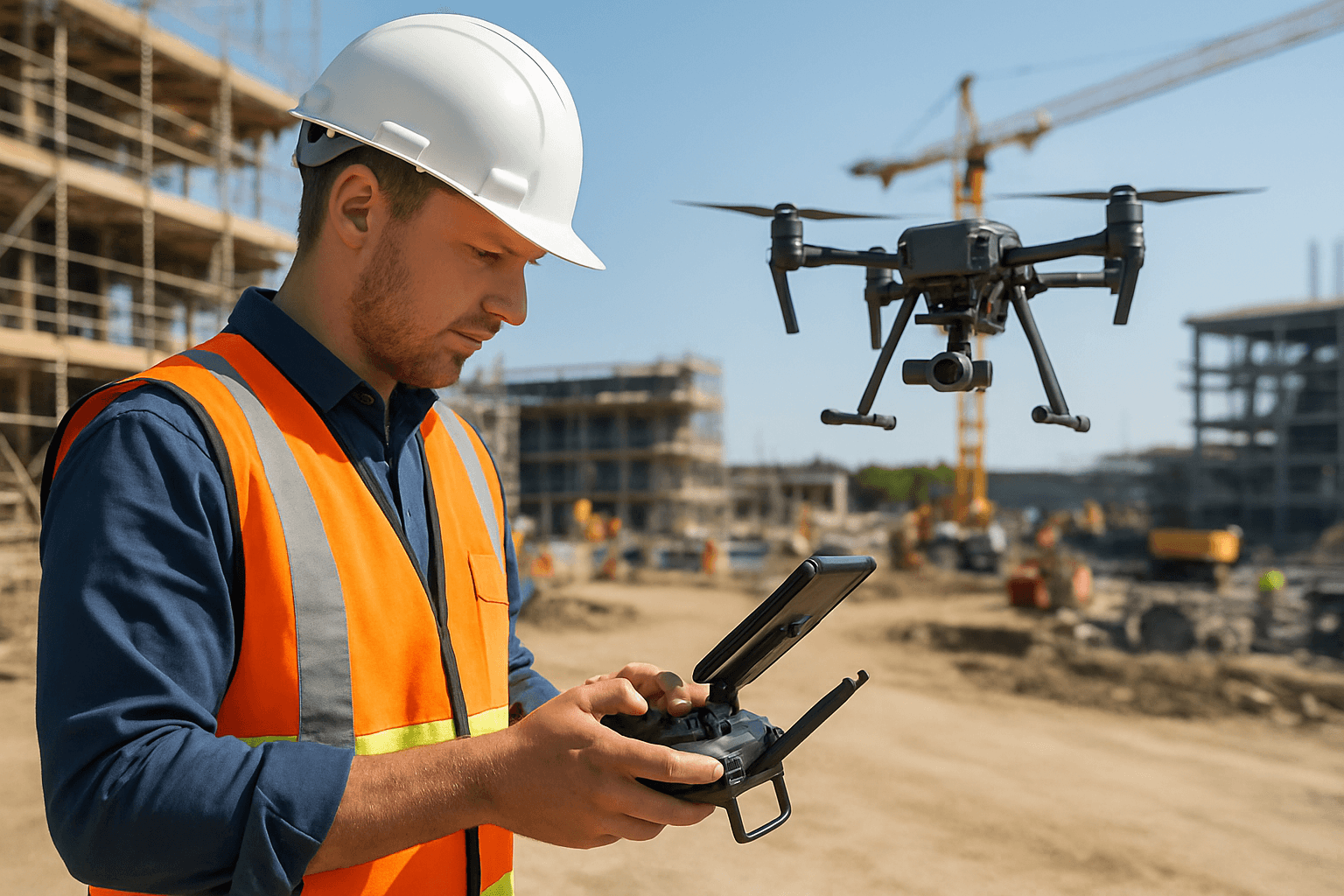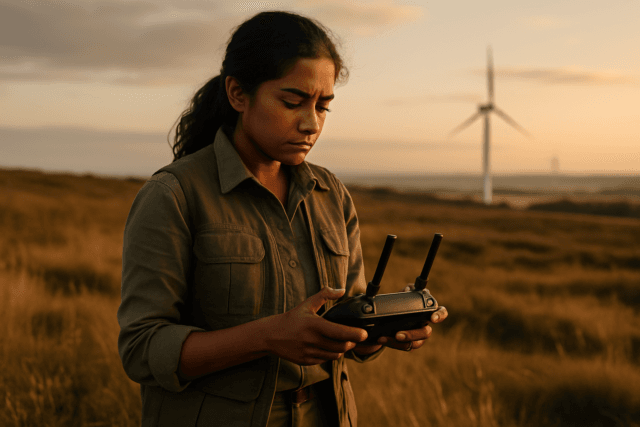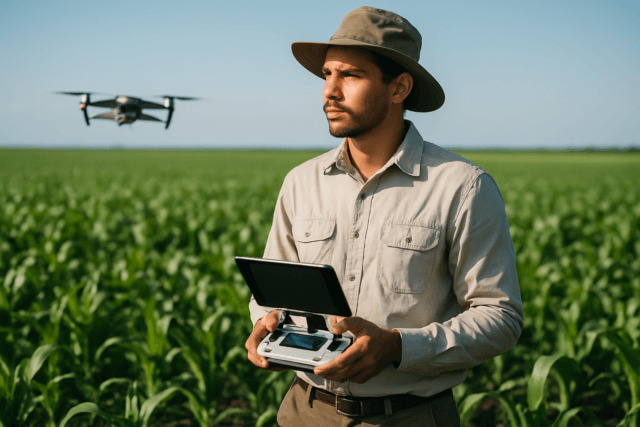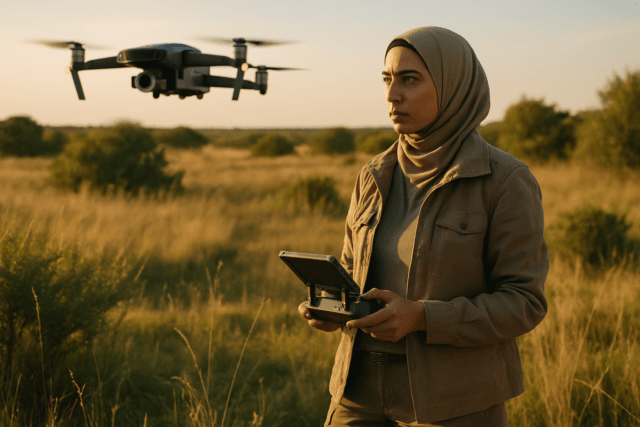Drones have moved from being a novel technology to a vital tool for businesses looking to cut costs and boost efficiency. Across various industries, drones are optimizing operations, leading to substantial savings and a competitive advantage. This article examines the numerous ways drones drive cost efficiency, providing real-world examples and insights into their financial benefits.
The Economic Ascent of Drones
The drone market is experiencing significant growth, driven by increasing demand across diverse sectors. In the UK, the drone market was valued at $1.2 billion in 2024 and is projected to reach $3.7 billion by 2035, exhibiting a compound annual growth rate (CAGR) of approximately 10.78% from 2025 to 2035. By 2030, drones could contribute up to £45 billion to the UK economy, with over 900,000 drones operating in the UK skies, generating £22 billion in net cost savings. Sectors like public and defense, health and education, agriculture, mining, water, gas, electricity, transport, and logistics are expected to realize the largest cost savings.
Key Areas of Cost Savings with Drones
Drones offer cost savings in several key areas:
Reduced Labor Costs
Drones can automate tasks that previously required significant manual labor. This automation leads to lower labor costs and increased efficiency.
- Example: A 12-acre survey job that typically takes 100 hours to manually survey can be completed by a drone in approximately 2 hours.
Increased Efficiency and Productivity
Drones can perform tasks faster and more efficiently than traditional methods, leading to increased productivity and reduced project timelines.
- Example: Drones can complete inspections up to 90% faster than traditional methods.
Enhanced Safety and Reduced Risk
Drones can eliminate the need for personnel to work in hazardous environments, reducing the risk of accidents and injuries. This is particularly beneficial in industries such as construction and infrastructure inspection.
- Example: Drones can inspect high-rise buildings or bridges without the need for scaffolding or rope access teams, reducing safety risks and associated insurance costs.
Lower Operating Costs
Drones have lower operating costs compared to traditional methods such as manned aircraft and ground-based inspections. They require only a single operator and consume less energy, resulting in significant cost savings.
- Example: Electric drones generally have lower energy costs compared to fuel-powered vehicles used by traditional couriers.
Improved Data Quality and Accuracy
Drones can collect more accurate and detailed data than traditional methods, leading to better decision-making and reduced errors.
- Example: Drones equipped with high-resolution cameras and sensors can create detailed 3D maps and models of construction sites, allowing for precise measurements and volumetric calculations.
Reduced Environmental Impact
Drones operate with near-zero emissions, making them an eco-friendly alternative to traditional equipment like trucks, helicopters, and cranes.
- Example: Drones have a 98% reduced carbon footprint compared to traditional equipment.
Sector-Specific Cost Savings
The cost savings associated with drone use vary across different sectors. Here are some notable examples:
Agriculture
Drones are transforming farming practices by providing farmers with unprecedented insights and capabilities.
- Precision Spraying and Seeding: Drones equipped with advanced sensors can precisely apply pesticides, herbicides, and fertilizers, reducing wastage and minimizing environmental impact. Studies show that targeted application can reduce chemical usage by up to 40% and increase yields by up to 20%.
- Crop Monitoring and Health Assessment: Drones can quickly survey large areas of farmland, monitoring plant health, detecting diseases, and identifying water stress. This enables farmers to take timely corrective actions, preventing crop losses and optimizing resource use.
- Soil Analysis: By capturing detailed images of the ground, drones can help assess soil quality and determine the best planting strategies.
- Irrigation Management: Drones equipped with thermal sensors can detect which areas of a field need more or less water, optimizing irrigation and conserving water resources.
- Livestock Monitoring: Drones can track livestock movements and check their health from above, reducing the need for farmers to manually inspect every animal.
Quantified Benefits:
- Farmers can decrease food wastage by as much as 50% by using data collected through drone operations.
- The UK’s agricultural sector could benefit from a productivity increase of over 30% through the use of drone technology.
- Automation could lead to a 90% reduction in costs for farmers. For farmers spraying 1,000 acres annually, drone applications can cost approximately $12.27 per acre, compared to custom hire rates of around $16 per acre.
Construction and Infrastructure
Drones are enhancing efficiency, safety, and cost-effectiveness in the construction industry.
- Site Surveys and Inspections: Drones can conduct site surveys and inspections more quickly and safely than traditional methods, eliminating the need for expensive manned operations.
- Progress Monitoring: Drones provide detailed site surveys and progress monitoring, allowing for better decision-making and reduced errors.
- Equipment and Materials Management: Drones streamline inventory management by providing real-time monitoring of on-site materials and equipment. This ensures accurate stock levels and helps prevent shortages or overstocking.
- Marketing: Drones provide high-quality marketing content at a modest cost, with construction drone footage typically in 4K ultra HD quality.
Quantified Benefits:
- Drones can reduce surveying costs by up to 50% while completing tasks in hours rather than days.
- Drone use can reduce costs by 40-60% and speed up inspection times by several days.
- Construction companies using drones saw ROI within one year, meaning that drones in the construction industry pay almost immediate and consistent dividends.
- Drones reduce project monitoring costs by up to 55%, enabling faster progress tracking and immediate adjustments.
Logistics and Delivery
Drones are transforming last-mile delivery, offering faster and more cost-effective solutions.
- Vaccine Delivery: Drones can save costs for deliveries of small payloads such as emergency shipments compared to motorcycle deliveries.
- Reduced Operational Costs: Drones have lower operating costs compared to traditional methods such as manned aircraft and ground-based inspections.
- Depot-Based Drone Delivery: Depot-based drone delivery led to up to 60 percent cost savings compared to truck-only delivery when servicing low demand in small areas.
Quantified Benefits:
- Drones can increase access to vaccines in areas that are not connected by road infrastructure at all or year-round.
- Model results showed that for a small delivery region of 0.25-mile squares, the drone delivery mode led to up to about 60 percent cost savings compared to the benchmark delivery mode with trucks only.
Security and Surveillance
Drones offer flexible, real-time aerial surveillance, reducing the need for extensive personnel deployment.
- Enhanced Coverage: Drones provide comprehensive coverage that traditional systems cannot match.
- Reduced Costs: Drones reduce the need for extensive personnel and infrastructure, offering a more affordable security solution.
- Site Security: Drones enhance site security by providing continuous surveillance to prevent theft and vandalism.
Quantified Benefits:
- Using drones can cut security monitoring costs by up to 50% while enhancing efficiency.
Environmental Monitoring
Drones are valuable tools for environmental monitoring, offering cost-effective and non-disruptive data collection.
- Ecosystem Surveys: Drones reduce costs for environmental surveys by 30-50% and allow for faster data collection on ecosystems, wildlife populations, and habitat changes—all without disrupting the environment.
- Reduced Carbon Footprint: Drones operate with near-zero emissions, making them an eco-friendly alternative to traditional equipment like trucks, helicopters, and cranes.
Quantified Benefits:
- Drones have a 98% reduced carbon footprint compared to traditional equipment.
Disaster Management and Emergency Response
Drones are invaluable in disaster management and emergency response due to their rapid deployment and data collection capabilities.
- Rapid Response: Drones can be deployed within minutes, offering immediate insights into disaster zones, which is critical for time-sensitive scenarios.
- Enhanced Safety: Drones minimize the risks to human responders by navigating hazardous environments such as fire zones or collapsed structures.
- Data Precision: Advanced sensors provide actionable insights that improve decision-making, reducing waste and optimizing resource allocation.
Quantified Benefits:
- Drones enable faster containment of fires, reducing property damage and loss of life.
- Drones provide critical situational awareness to first responders, ensuring a more coordinated and effective response.
- Investing in drones avoids endangering rescue teams.
Real-World Case Studies
Several real-world case studies demonstrate the tangible return on investment (ROI) from incorporating drones into project workflows.
Commercial Office Renovation
A major commercial developer used construction drones to monitor the renovation of a 20-story office building. By deploying drones, the inspection time was reduced by over 60%, and labor costs were slashed by nearly 30%. The drone-generated 3D models enabled early detection of structural issues, preventing costly delays and contributing to a 25% overall improvement in project ROI.
Highway Infrastructure Project
In a state highway construction project, drones were used for routine progress tracking and safety inspections. The aerial footage provided by these construction drones helped the project team detect hazards early, resulting in a 40% reduction in safety incidents. Additionally, the high-resolution maps enabled better logistics planning, reducing material delivery times and shortening the overall project timeline by 15%.
Agriculture
The deployment of drones in agriculture has led to notable improvements in farm operations:
- The time required for crop management tasks was reduced by 60%, allowing farmers to allocate more time to other critical activities.
- The precision and timeliness of interventions led to a 15% increase in crop yields.
- Reduced labor and operational costs due to the drone’s efficiency and capacity contributed to overall savings.
Calculating the ROI of Drone Integration
To determine if investing in a drone is financially worthwhile, a drone ROI calculator helps measure the return on investment (ROI) by analyzing costs, operational savings, and revenue generation, ensuring informed decisions about drone use.
The ROI calculation involves the following steps:
- Total Cost of Ownership: Includes hardware, software, training, maintenance, and compliance costs.
- Annual Cost Savings: Considers labor reduction, decreased downtime, and material optimization.
- Productivity Gains: Assesses increased operational tempo and enhanced data quality.
- Additional Revenue Opportunities: Evaluates new services and enhanced product quality.
Conclusion
Drones are proving to be invaluable tools across various industries, offering significant cost savings and operational improvements. From reducing labor costs and increasing efficiency to enhancing safety and improving data quality, the benefits of drone technology are substantial. By understanding the key areas of cost savings and the sector-specific advantages, businesses can make informed decisions about incorporating drones into their operations and achieve a significant return on investment. As technology evolves and integration barriers diminish, early adopters stand to capture both immediate efficiencies and long-term strategic advantages.





